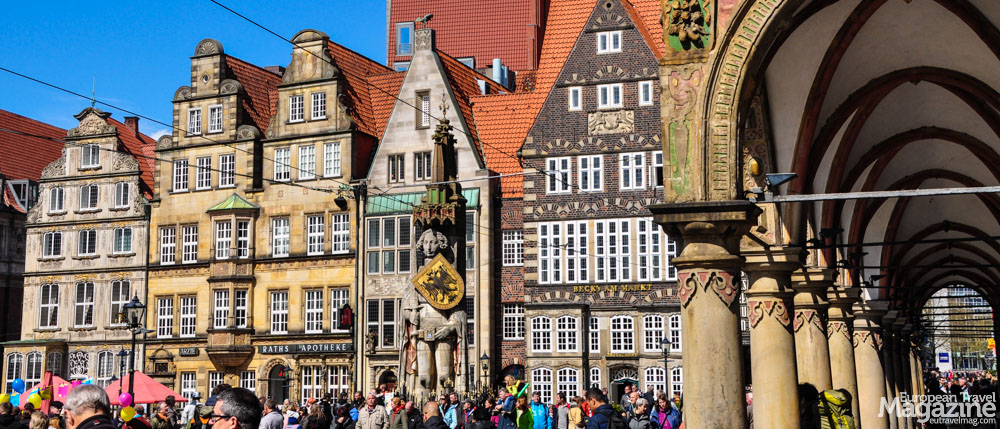The story about the brave and reckless knight Roland and his legendary sword Durendal is rooted in historical facts. His story inspired the romantic movement in medieval France and song were sung about him, praising him as the perfect knight. But how much is true? Is fiction better than fact?
Fact
Roland really was a Frankish military leader under Charlemagne, commander of the Breton border and died in battle in 778 in the Pyrenees. But while later tales tell the story about a muslim ambush, it was actually a Basque guerilla army that entrapped the Carolingian army and killed a whole battalion.
And that’s it. This was the only historical account of Roland documented by Charlemagne’s biographer Einhard.
Fiction
The legend of Roland however, is much more colourful, violent and propagandic. In the 11th and 12th centuries, a romantic movement swept over the medieval courts of Europe praising chivalric knights, virtuous ladies and christian values.
This romantic literary movement is grouped into three clusters of legends: The Arthurian cycle or the Matter of Britain, The Carolingian cycle or the Matter of France and the Matter of Rome, a cycle telling tales from Roman and Greek antiquity. While the French poet Chrétien de Troyes wrote “Perceval – the Story of the Grail” and other Arthurian tales in late 12th century, the poem The Song of Roland – or La Chanson de Roland – is rooted in oral tradition with no specific author and 150 years older.
So, to make a tale that was fit to be told in medieval castles and sung at the court, to inspire young men and charm the ladies, you had to add some more action.




The sword
In fiction, Roland was upgraded to Charlemagne’s nephew as one of his twelve so-called paladins, the foremost warriors of Charlemagne’s court. He was also handed a magical sword, Durandal, brought by an angel to Charlemagne and the sharpest word in all existence and in the poem, Roland uses the sword to hold the one-hundred-thousand-strong Muslim army troops.
When he realises his defeat, he tries to destroy Durandal, keeping it from getting into enemy hands by smashing the sword into a rock, creating what is in actually is known as Roland’s Breach, a natural gap in the Ordesa y Monte Perdido National Park at the Franco-Spanish border.
While the poem reports, that Roland hid the sword under his body before he died, folklore claims that he hurled the sword to the north just before he dies and that it flew 268 kilometres before it plunged into the rock above the Chapelle de Notre-Dame in Rocamadour, where you can see it today. Chained to the rock in case anyone would try to yank it out.






The enemy
While history says, that the army, that ambushed Charlemagne and Roland in the Pyrenees was Basque, La Chanson de Roland claims, the battle took place at Roncevaux pass (nowaday Roncesvalles in Spain) and that the deceitful army was Muslim. Perhaps that contributed to its popularity in the 11th and 12th centuries. One can’t help but wonder if the Christian and feudal lords, that called for Crusades in that exact time in history used the poem to instigate hatred towards the treacherous Muslims and inspire young men to become brave knights.
Because if one knight could hold off one-hundred-thousand-strong Muslim troops, slice off the hand of Muslim king and decapitate the king’s son, maybe another knight could do it too and become subject for yet another legend.





The death
Legend says, that when Roland and his army was first attacked, he refuses to blow his horn to call for help from the rest of Charlemagne’s army, that was further north. This brave and proud knight would not come crying for help at the first sign of battle. When the 400.000 strong Muslim army proves hard to ignore, he concedes to his advisors and blows his horn, calling Charlemagne for rescue.
But too late. The superior force of the Muslim army butchers the army of Roland before Charlemagne can reach him and in the end, although defeat is inevitable, Roland blows his horn one last time summon revenge, until his temples burst and he dies a martyr’s death.
Brave, proud and reckless. The epitome of a medieval knight.


Legacy
La Chanson de Roland was the first of its kind of the chanson de geste, a literary form that flourished between the 11th and 15th centuries and celebrated legendary deeds. Roland was a heroic image promoted all over Europe.
The story was read out to the army before the Battle of Hastings in 1066 to inspire courage and all over Europe, in the former Holy Roman Empire, statues of Roland were erected as emblems of city liberties with the Roland statue in Bremen from 1404 as the oldest surviving example.
But most of all, Chanson de Roland inspired thousands of young men to go to war and die a chivalrous death. It romanticised war, battle and defined the archetypical knight. For better or worse.




More info
- Roland on Wikipedia
- The Song of Roland as text
- Roncesvalles, Spain Official Tourism website
- Rocamadour, France Official tourism website
- Bremen, Germany Official Tourism website







